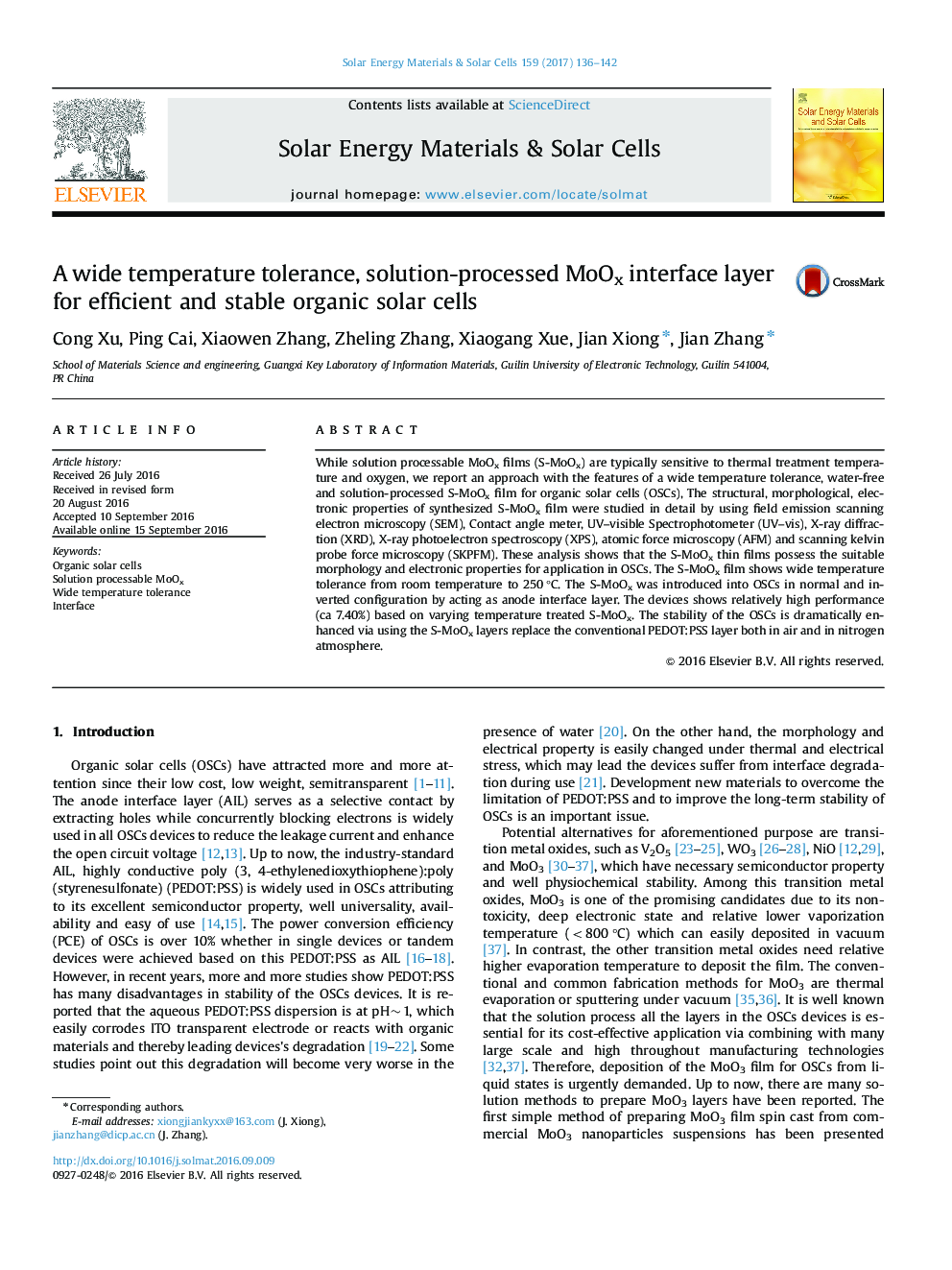| Article ID | Journal | Published Year | Pages | File Type |
|---|---|---|---|---|
| 6457461 | Solar Energy Materials and Solar Cells | 2017 | 7 Pages |
â¢The S-MoOx xerogel is synthesized via sol-gel derived method.â¢S-MoOx solution and film feature superior solubility, morphology and electronic properties.â¢Performance comparable to device with PEDOT:PSS HTL achieved using sol-gel derived S-MoOx.â¢Wider temperature tolerant from room temperature to 250 °C for this S-MoOx layer.â¢Dramatically enhance the stability of the OSCs using S-MoOx replacement of PEDOT:PSS.
While solution processable MoOx films (S-MoOx) are typically sensitive to thermal treatment temperature and oxygen, we report an approach with the features of a wide temperature tolerance, water-free and solution-processed S-MoOx film for organic solar cells (OSCs), The structural, morphological, electronic properties of synthesized S-MoOx film were studied in detail by using field emission scanning electron microscopy (SEM), Contact angle meter, UV-visible Spectrophotometer (UV-vis), X-ray diffraction (XRD), X-ray photoelectron spectroscopy (XPS), atomic force microscopy (AFM) and scanning kelvin probe force microscopy (SKPFM). These analysis shows that the S-MoOx thin films possess the suitable morphology and electronic properties for application in OSCs. The S-MoOx film shows wide temperature tolerance from room temperature to 250 °C. The S-MoOx was introduced into OSCs in normal and inverted configuration by acting as anode interface layer. The devices shows relatively high performance (ca 7.40%) based on varying temperature treated S-MoOx. The stability of the OSCs is dramatically enhanced via using the S-MoOx layers replace the conventional PEDOT:PSS layer both in air and in nitrogen atmosphere.
